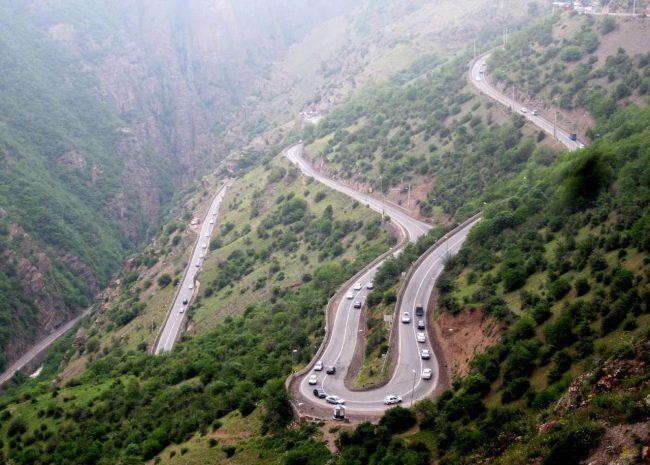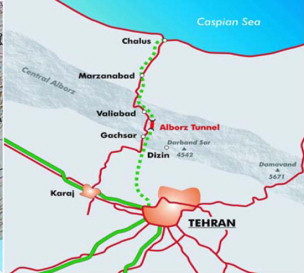January 10, 2020

The long-awaited first section of the freeway to the Caspian will open in February, a mere 13 years late, according to the Mostazafin Foundation, which has been in charge of the constantly delayed project.

Karaj to Chalus. The sections that punch through
the high peaks of the Alborz Mountains are nowhere
near completion.
The Tehran-Shomal (North) Highway, when completed, will be 121 kilometers (75 miles) long and run from Karaj to the Caspian coast at Chalus. But what makes the highway impressive and challenging is that it will have 144 tunnels of varying lengths. And the key challenge to plotting the route between the tunnels has been to minimize the chances of avalanches.
The new highway will replace the old Chalus Road, which opened in 1933 and is long and winding and frequently closed by avalanches.
What is opening—if it really does open in February—is the southern quarter of the new highway, a portion that doesn’t enter the high mountains of the Alborz and which was supposed to open in 2007. The northern sixth of the highway opened in 2013 but is mainly on the flatlands of the Caspian coast. The middle two sections, through the most difficult high peaks of the Alborz, are far from complete. The second section is said to be only 30 percent complete. When those sections will open is anyone’s guess at this point. They are being built by Chinese contractors, but work has been very slow because financing has been very slow.
The new highway was designed in the 1960s, long before the revolution, to cut the time to get to the Caspian coastal resorts by two hours. The whole idea of the highway was loudly maligned by the revolutionary opposition to the Shah as a wasteful, prestige project
Immediately after the revolution, the highway plan was canceled in toto. Other “prestige projects” were also canceled, including the Tehran subway and the nuclear program. The subway was resurrected in just a matter of months, when the new regime recognized it was needed to solve the capital’s traffic problems. The nuclear program was resurrected during the war with Iraq when the regime decided it needed to an atomic bomb to stop the Iraqis. The highway program was resurrected in the mid-1990s and described as a highway to the newly independent former Soviet republics of Central Asia, although the route still led straight to the Caspian beaches.
The highway has been much delayed, partly by the severe engineering challenge, but largely by a shortage of funds.
The Chinese were brought into the project in 2006, but that hasn’t noticeably sped things up. Here is the highway plan starting from the southern end:
Sec. Length Tunnels Progress
1 32 kms 28 c. 100%
2 25 kms 20 30%
3 44 kms 92 ?
4 20 kms 4 Open
